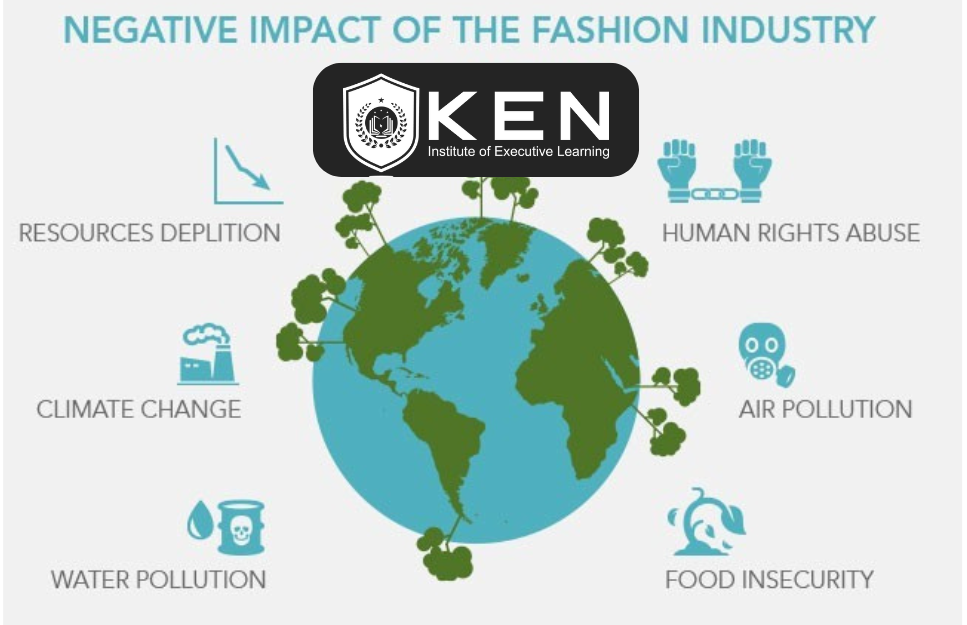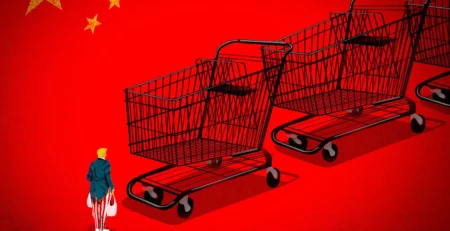E-commerce has become a big part of how people shop today. In 2024, the U.S. was leading the way, earning billions of dollars in online sales. The shift to online shopping took off after the COVID-19 pandemic. Many businesses had to adapt quickly, and online sales became the go-to for both businesses and customers. It’s no surprise that experts predict steady growth, like a 14.5% yearly increase for business-to-business e-commerce by 2026.
Trends in e-commerce are a noticeable shift or development that has a lasting impact. They shape how businesses operate online, influenced by factors like technology, consumer habits, social media, and ethical considerations. Companies rely on data and analytics to keep up with these changes and stay competitive in the market.
Some trends fade quickly, while others change the market for good. Here’s a look at some e-commerce trends shaping 2025 and what they mean for businesses and shoppers.
Table of Contents
Top Ecommerce Trends for 2025
Here’s a closer look at what’s happening in ecommerce this year:
Membership Programs Are Changing Customer Loyalty
Membership programs are becoming a go-to strategy for brands looking to build stronger relationships with customers. Inspired by Amazon Prime, companies like Target are rolling out fee-based programs that offer perks like free shipping, early access to sales, and exclusive discounts.
In 2025, more ecommerce brands are expected to launch similar programs. These memberships create a sense of exclusivity while delivering value to customers. Tools like Inveterate, designed for Shopify stores, make it easier for smaller businesses to launch and manage subscription-based loyalty programs.
Expect to see these models scale as brands refine their offerings to retain customers and encourage repeat purchases.
Every Interaction Becomes a Sales Opportunity
Businesses are focusing on merging content and commerce. The goal is to turn every interaction, whether through a website, social media post, or even a vending machine, into a chance to drive sales.

Social platforms like TikTok have already shown how effective this approach can be. Users can discover products, watch reviews, and complete purchases without ever leaving the app. This trend isn’t limited to consumer goods. Even B2B brands are adopting strategies that incorporate educational content, influencer partnerships, and product demos into the sales journey.
A/B Testing Grows More Accessible
Since Google Optimize was discontinued in 2023, many marketers have turned to paid solutions, driving growth in the A/B testing market.
Today’s tools are more affordable and also smarter, with features like automation and pre-built templates. This makes them accessible to smaller brands looking to optimize their websites, email campaigns, and ads.
With ad costs remaining high, businesses are relying on A/B testing to maximize the effectiveness of their marketing spend. This trend will only grow as brands compete for customer attention.
AI Agents and Personalization
AI is transforming e-commerce in 2025, with tools that can analyze data, predict trends, manage inventory, and even create content like product descriptions. These AI agents are helping businesses stay ahead by offering insights into everything from marketing strategies to supply chain improvements. Companies using flexible systems, known as composable architectures, will especially benefit from these tools, as they can quickly integrate AI into different aspects of their operations.

On the customer side, AI is also making shopping more personalized. In 2025, brands will use AI to offer more customized experiences, such as custom recommendations and content based on your shopping habits and preferences. But for it to work, customers need to feel like the personalization is genuine. People want to trust that their data is handled properly, so businesses that are open and clear about how they use it will build stronger, more trustworthy relationships with their customers.
Conversational Commerce Takes Center Stage
AI-powered chatbots and virtual assistants are becoming important tools for ecommerce brands. In 2025, these technologies will play a larger role in customer service, product recommendations, and even the checkout process.
Voice-enabled shopping is also growing. While only a small percentage of customers currently shop through devices like Alexa, this number is expected to rise as voice interactions become more intuitive.
Brands investing in conversational commerce can offer hyper-personalized experiences, such as proactive recommendations or reorder reminders based on past purchases.
Omnichannel Strategies Drive Growth
Consumers now expect consistent experiences across all channels, from social media to brick-and-mortar stores. In 2025, omnichannel strategies will be important for brands looking to meet these expectations.
The goal is unifying data across platforms to provide smooth, personalized interactions. For example, a customer browsing a product on Instagram might receive a follow-up email with related items, making it easy to continue their shopping journey.
Composable architectures make this process easier, enabling brands to quickly adapt to new channels.
Smart Devices Redefine Shopping
The rise of IoT-enabled devices is reshaping how consumers interact with brands. In the future, your smart fridge might suggest groceries to reorder, or your shower could recommend shampoo options based on your preferences.
These devices create new opportunities for ecommerce, blending convenience with personalization. However, brands must address concerns around data privacy to maintain consumer trust. Transparency will be important as these technologies continue to evolve.
Vector Search
Traditional search engines are getting a serious upgrade because of vector-based search models. With classic search, if your query didn’t match the exact keywords, you might end up with no results at all. But with vector search, you can easily find related products, even if the wording doesn’t match exactly.
This shift means shoppers will see more relevant results, without the frustration of a “no results” page. Expect more ecommerce platforms to adopt vector search in 2025, making online shopping more intuitive and user-friendly.
Shopify Takes on Big Business
In 2024, Shopify proved it’s not only for small businesses anymore. Large brands like Barnes & Noble and QVC made the jump, and with the platform’s improved flexibility, cross-border features, and B2B capabilities.
The recognition from leaders like Gartner and Forrester only adds to Shopify’s credibility as a serious option for big companies. Expect more companies to move to Shopify in 2025 as the platform continues to prove itself as a leader in the enterprise space.
Simplifying Tech Stacks
More businesses are choosing to simplify their tech stacks in 2025. The idea is simple: fewer tools, less complexity, and a leaner system. This trend is especially relevant in places like Europe, where economic pressures are making companies rethink their software strategies. Simplifying the tech stack saves money and makes it easier to manage different parts of the business. Expect to see a rise in brands opting for more integrated systems this year.
Tech is Making International Sales Easier
Selling globally has always come with its challenges, from currency conversions to payment methods. But with platforms like Shopify Markets and tools like Nosto, brands are finding it easier to handle international sales. Shopify now makes it a breeze for businesses to manage cross-border sales, and Nosto’s ability to handle language and currency variations means no matter where your customers are, you can provide a personalized experience.
Chinese Marketplaces

Chinese marketplaces like Shein and Temu have seen incredible growth, but 2025 might be a different story. Political pressure and concerns over environmental impact and labor practices are beginning to catch up with these platforms. The EU and the US are taking steps to regulate the cheap imports coming from these sites. While they’ve dominated the ecommerce space, expect to see some shifts in their growth trajectory this year.
Short-Form Video
If you’re not using short-form video in your ecommerce marketing, you’re missing out. Platforms like TikTok, Instagram Reels, and YouTube Shorts are dominating the content game, and brands are starting to realize they need to be part of the conversation. More than creating videos, it has more to do with looking into viral trends, collaborating with creators, and utilizing user-generated content (UGC). As attention spans shrink, this kind of content is becoming a must-have for brands looking to stay relevant.
Customers Want Easier Payment Options
Today’s shoppers expect smooth, flexible payment options. Traditional methods can feel like a chore, so offering a variety of ways to pay is essential. From “buy now, pay later” to mobile wallets and even cryptocurrency, providing diverse payment methods makes the buying process easier and faster. This trend will only grow in 2025 as customers demand more choices.
TikTok’s Ecommerce Takeover
TikTok has already made waves in ecommerce with its shopping features, and it’s only going to get bigger in 2025. In 2023, TikTok launched its shop features in the US and partnered with Amazon to offer Prime checkouts. As a result, TikTok’s ecommerce revenue exploded, and it’s predicted to hit $20 billion in sales.
Don’t ignore Pinterest when it comes to e-commerce. With their deal with Amazon and a 6% increase in sales in 2023, Pinterest is proving it’s a valuable tool for brands. If you’re looking for a platform that blends social media with ecommerce, Pinterest is growing into a powerhouse. As brands continue to integrate with platforms like Amazon, Pinterest is set to play an even bigger role in driving online sales in 2025.
Instant Delivery
Waiting for your orders to arrive is quickly becoming a thing of the past. As consumer demand for speed grows, businesses are improving their delivery processes with options for same-day or even instant shipping. By setting up local distribution centers, partnering with delivery services, or even creating their own in-house fleets, brands are finding ways to meet customer expectations for speed. This trend is huge in 2025, as quick delivery becomes a competitive advantage.
GenAI Advertising
Personalized ads are nothing new, but AI-driven advertising is taking it to the next level. With the help of generative AI, brands can deliver ultra-targeted content based on a customer’s preferences, behaviors, and shopping habits. Expect ads to feel even more personal in 2025, as AI helps create customized experiences that relate to individual consumers.
The future of ecommerce is shaping up to be a time of incredible change and growth. As businesses stay ahead of these trends, they’ll be able to meet consumer demands and exceed expectations. While the world’s economic uncertainty might bring challenges, retailers are becoming more creative and resourceful, finding new ways to capture attention and drive loyalty. With the right mindset and adaptability, 2025 could bring a wave of success for those who stay in tune with the evolving online landscape.
Have a vision for your business? Let us help you get started! At EvolveDash, we’re passionate about helping businesses grow and evolve in the digital world. Our team is here to help every step of the way, from developing custom mobile apps to creating personalized websites.
With a proven track record of helping over 100 satisfied customers and 450 completed projects, we’re confident we can help you achieve your goals too. Let’s turn your business vision into success!
FAQs
- How will sustainability impact ecommerce in 2025?
More consumers are looking for eco-friendly packaging, carbon-neutral shipping, and ethical sourcing. Brands focusing on sustainability will gain customer trust and loyalty.
- What role will blockchain play in ecommerce?
Blockchain technology is being used for secure transactions, supply chain transparency, and reducing fraud in online shopping.
- How will data privacy laws affect ecommerce businesses?
Stricter regulations like GDPR and new U.S. privacy laws will require businesses to be more transparent about data collection and usage.
- Will drone delivery become mainstream in 2025?
While drone delivery is expanding, it still faces regulatory and logistical challenges before becoming widely available.
- How will ecommerce platforms handle the rise of counterfeit products?
AI-driven detection tools and stricter policies from marketplaces will help combat counterfeit goods, improving trust for online shoppers.



















